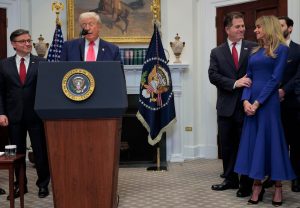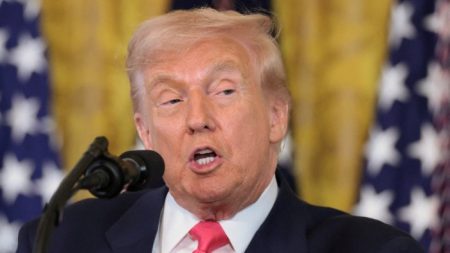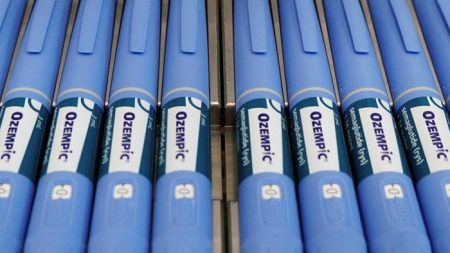Stay informed with free updates
Simply sign up to the Chinese economy myFT Digest — delivered directly to your inbox.
China’s economy grew a robust 5.4 per cent in the first quarter of this year as producers frontloaded exports to beat higher tariffs imposed by US President Donald Trump, official data showed.
The GDP figures released by China’s National Bureau of Statistics on Wednesday are the first since Trump unleashed his trade war, threatening a decoupling between the world’s two largest economies.
The year-on-year expansion matched China’s growth rate in the fourth quarter and exceeded Beijing’s full-year target for 2025, as well as the 5.1 per cent forecast by analysts in a Reuters poll.
The strong first-quarter growth came despite Trump’s first salvo of 20 per cent tariffs, but economists expect China’s economy to come under pressure as the full US levies take force and Chinese households are still struggling to recover from a deep property slowdown.
The economy had a “good start” in the first quarter, said NBS deputy commissioner Sheng Laiyun.
But he warned that “the current external environment is becoming increasingly complex and severe, the driving force for domestic effective demand growth is insufficient and the foundation for the economy to continue its rebound and improvement still needs to be solidified”.
Chinese markets were muted despite the relatively strong growth figures. Hong Kong’s Hang Seng index was down 2.3 per cent for the day, while mainland China’s CSI 300 index lost 0.8 per cent. The renminbi weakened 0.15 per cent to Rmb7.326 a dollar.
Beijing has set what analysts have described as an ambitious growth target of 5 per cent for this year, in line with last year’s growth rate. Policymakers have pledged to back this goal with stimulus measures, funded by a record budget deficit target for the central government.
But economists have been downgrading their forecasts in the wake of Trump’s trade war, with Morgan Stanley cutting its estimate for China’s 2025 GDP growth from 4.5 per cent to 4.2 per cent for this year.
Trump has since imposed additional tariffs of up to 125 per cent on Chinese goods, although he has granted what he has said were temporary exemptions for some goods such as smartphones and electronics.
China has responded with retaliatory tariffs of 125 per cent, setting the stage for a hard decoupling.
UBS estimated that slightly less than 60 per cent of Chinese goods shipped to the US were subject to the maximum 145 per cent tariff, with the rest facing tariff rises of 20 per cent to 45 per cent as of last week.
China’s exports rose 12.4 per cent in dollar terms in March on a year earlier, the biggest rise since October, while imports fell 4.3 per cent, figures released on Monday showed.
Sheng said the rapid growth in exports despite the increase in tariffs and trade restrictions since February demonstrated China’s “resilience”.
“We have a rich toolbox of policy options, ensuring that we can respond to external shocks and challenges,” he added.
The NBS on Wednesday said retail sales — an important gauge of consumption in China — rose 5.9 per cent last month against a year earlier, beating the average analyst forecast of 4.2 per cent and a reading of 4 per cent for the January-February period.
March industrial production was up 7.7 per cent from 5.9 per cent in January-February, also beating analysts’ forecasts.
The rapid rise in industrial production came despite deflationary pressures in China due to what economists say is insufficient household demand, as a years-long property sector crisis damps consumer sentiment.
Instead, Chinese policymakers have leaned on manufacturing and exports to drive growth, with the country reporting a record global trade deficit last year of nearly $1tn despite increasing tensions with its trading partners.
Data visualisation by Haohsiang Ko in Hong Kong
Read the full article here














